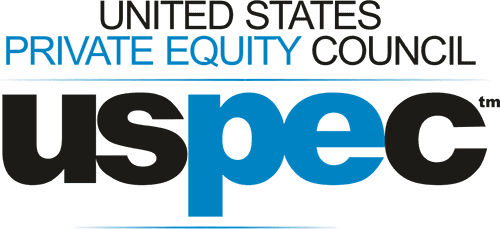Often behind the scenes, private equity firms came into action to help their portfolio businesses during COVID-19 in many ways. Learn how PE firms leverage the latest technology, expertise, and agility to meet stakeholders' expectations in playing a crucial role in the economic recovery.
The symbiosis of private equity companies, portfolio companies, and limited partners
Private equity (PE) firms have a significant role to play in the economy. They assist small businesses to grow and, in turn, provide investors with a return. When crises like the COVID-19 pandemic happen, PE firms become more crucial as they provide companies with business resources and industry expertise to help them deal with the storm.
In addition, as public market equity prices rise, PE funds may become increasingly attractive for investors on a valuation basis. The forward S&P 500 price-to-earnings percentage (27.5 times analyst's forecasts for the next year's earnings) has reached a record high.
In this situation, investors are more likely to consider investment classes like PE to identify opportunities. PE firms' capacity to improve the value of their portfolio companies and provide significant returns opens up the possibility of drawing fresh investment and reinvestments alike. This could boost the assets under management (AUM) growth. This increased interest could propel PE AUM up to US$5.8 trillion by the end of 2025, an increase of US$4.5 trillion at the close of 2019, according to a forecast compiled by the Deloitte Center for Financial Services.
Despite the optimistic outlook, however, it is not a guarantee that all PE firms will succeed. PE firms that meet the expectations of the three primary stakeholders-- their workforce, their portfolio companies, and limited partners (LPs)--will probably reap the greatest benefits.
The Initial Impact of COVID19 on Portfolio Companies
As per the Preqin quarterly update, initially, the COVID-19 pandemic presented PE companies with a chance to grow as well as a threat to use an unprecedented US$1.4 trillion of dry powder. The first quarter of 2020 witnessed no change in the number of deals that closed compared to the year before and Q2 of 2020; the market attempted to determine COVID-19's impact on investment opportunities. As per the US PE Breakdown of Q2 2020, many deals for business and consumer-facing businesses were delayed as the four-quarter rolling median EBITDA/EV ratio for US buyouts jumped from 12.9 in the first quarter 2020 to 15.2 during Q2 of 2020.
PE firms began to use their dry powder during the second half of 2020 and started to take a close look at the future potential of the target businesses and portfolio companies. COVID-19 created a unique scenario in which the current problems facing companies extend beyond the stress of liquidity. This situation has resulted in deals remaining active for companies that have minimal or positive impacts. However, some deals for companies that have uncertain futures are being held back.
PE companies' financial backing and knowledge are helping portfolio companies get through the outbreak and economic disruptions. PE firms also help portfolio companies to manage the supply chain, create digital capabilities, and ensure business continuity and secure funding.
Uncertain times could boost the growth of PE
If economic activity returns to its normal levels of growth in the post-COVID-19 era, PE will likely play an essential role in economic recovery. In contrast to other investment vehicles, like mutual funds, ETFs, and hedge funds, PE firms can wait for the perfect time to release the cash deposited by limited partners. They also have greater control over the timeframe of their investments, which allows them to plan their exits to profit from higher valuations. In addition, since PE firms are involved in the oversight and management of their portfolio companies, they can effectively manage these businesses through crises.
In times of crisis, PE firms always have the opportunity to purchase companies at attractive prices.
They can improve their operational performance and make substantial profits as they exit when the market normalizes.
We can better understand PE funds' performances from the vintage years, which correspond to the years of crises, by looking at the great recession from 2007 to 2009. While most PE funds could not reach the end of the recession and remained in the shadows for a bit way too much, some did deliver double-digit returns. For instance, buyout funds in vintage years between 2008 and 2011 had an average IRR of 13.0 percent, as compared to 9.2 percent for the classic years 2004-2007. Based on this, it is clear that many PE managers have realized that being flexible during periods of uncertainty can impact the quality of fund returns.
Applying the lessons they learned from their previous experience, PE firms can benefit from the uncertainties posed by the pandemic and deliver higher returns and increase their assets under management.
How to satisfy Key Stakeholders' expectations?
Despite the rosy growth projection, however, not all PE companies will profit & have growth in assets in the same way. It will be contingent on the ability of firms to satisfy the needs of three major stakeholders: the PE employees, the portfolio companies, and LPs. Let's take a look at the most important aspects for every stakeholder.
1. The creation of a diverse PE firm
As competition between PE firms increases, the top private companies are likely to look at more than finance through PE investors.
Companies who excel in delivering knowledge about the industry and establishing relationships will stand out and will be able to secure deals and create the potential for unrealized gains. Forming, developing, and maintaining strong teams for sales can affect the firm's capacity to utilize its resources efficiently within this highly competitive market.
One method to be noticed is by creating boards and teams with diverse members. The creation and cultivation of a broad-based coalition can help firms benefit from various viewpoints that could connect with potential portfolio management teams of companies, particularly from underrepresented communities. The hiring of fund directors or board members who have different experiences and backgrounds allows companies to invest in more businesses with founders from diverse backgrounds and improve the diversity of the portfolio company in general.
PE firms with diverse boards and teams are also more creative and might procure better deals that could boost efficiency. In addition, one venture capital company observed that their investment in companies with female founders was more resilient and yielded a greater return on investment.
PE companies are aware of the benefits and are taking steps to increase diversity.
2. Create value for portfolio companies
PE firms require a solid track history of creating value for portfolio businesses to attract and secure lucrative deals. PE firms can use their industry knowledge and the area of competence of the company's management to form value-creation strategies for each business. The value-creation method identifies the importance, quantifies the performance, and outlines the execution of measures to improve performance throughout the process. After the plan has been approved, the company can begin working to achieve every one of the specified actions. However, implementation of these plans should be done with care to ensure that PE firms aren't perceived as being in charge of the business. Successful implementation of the value creation plan is an important factor in the return on investment.
Making effective value-creation strategies in consortium agreements is usually more complex. Consortium deals include several PE companies with different skills working with the portfolio business management to enhance the value. In the beginning, consortium PE firms must determine factors like each firm's role and responsibilities and the business strategy expansion, the structure of governance, the allocation of expenses and fees, and exit plans. The knowledge of the deal team and the management team in dealing with these issues will play an important part in helping the portfolio companies develop.
PE companies can leverage their networks to assist portfolio companies in growing their revenue and cut expenses. While new customer introductions may boost revenues, portfolio companies can help in reducing costs through discounts on scale through the central purchase of services.
Companies can also make use of advanced technology to increase efficiency in operations. Technologies like artificial intelligence (AI) and robotic process automation (RPA) have helped almost two-in-five (39 percent) companies to increase their operating margins. Additionally, PE firms can utilize techniques like large data and AI to evaluate portfolio companies using the number of customer reviews, brand reviews, and employee opinions to determine the most effective methods.
PE firms that have the best practices across their portfolio companies can aid in increasing their growth.
3. Create satisfaction and loyalties among the limited partner
The limited partners make up the third major stakeholder in PE, which is vital to growth. LPs are looking to invest in reputable businesses and can access solid deal flow, liquidity options, and well-planned exit strategies. Performance is the main driver for LP satisfaction. However, transparency, fee control, flexibility, and focus on social responsibility contribute equally to LP satisfaction.
PE firms link LP funds to private businesses, helping LPs meet their goals for allocations and provide the necessary capital for growth to these small firms. The importance of this function is growing as the pool of private businesses which investors can choose from is huge and expanding. It is estimated that the number of US companies employing at least 20 or more employees has increased by 2.8 percent between 2007 and 2017.36 In the same time. However, there was a decrease in the amount of US-listed companies that fell by 2.0%. Additionally, second buyouts (SBOs) are becoming the preferred exit method for PE investors, and the SBO marketplace has sufficient liquidity to allow deals worth billions of dollars (figure 6). Between 2006 until 2019, the amount of SBO exits was up by 5.2 percent per year, and PE exits via IPOs fell by 7.3 percent per year. While there were fewer SBOs and IPOs in the year 2020 because of the pandemic, certain unicorns have plans for an IPO in the latter part of 2020. The increasing popularity of SBOs has led to increasing the number of companies that remain private for longer.
CONCLUSION
PE firms should operate with an open-minded operating structure. Hence, they can continuously monitor trends in the industry to make the most of opportunities to raise funds and make deals. Based on the most recent developments, companies may think about revising operational issues like deals sourcing, product launches, and exit plans.






